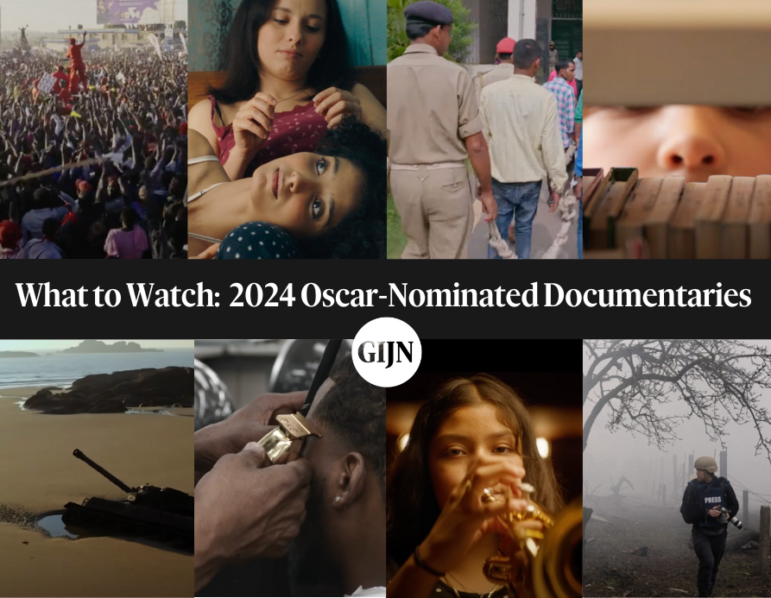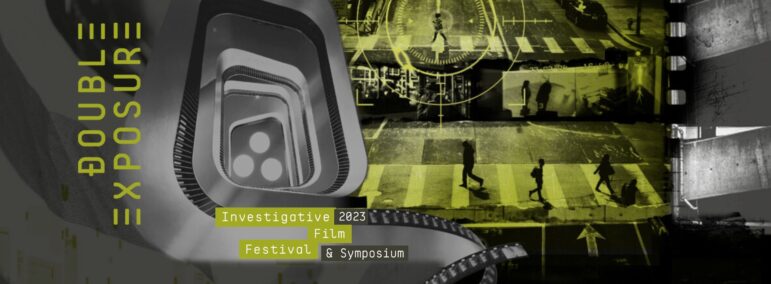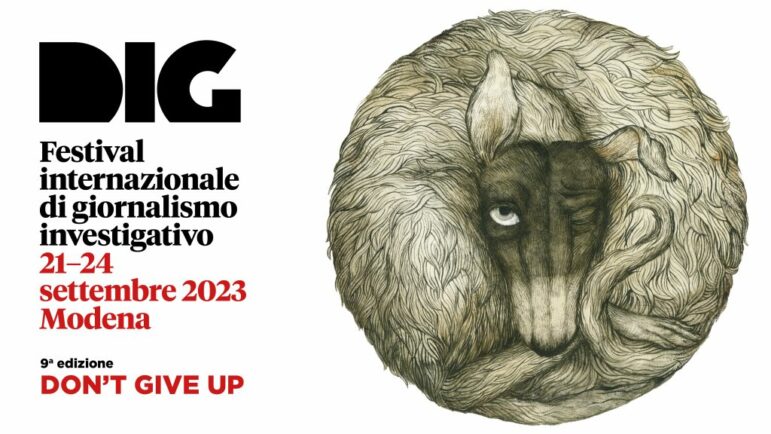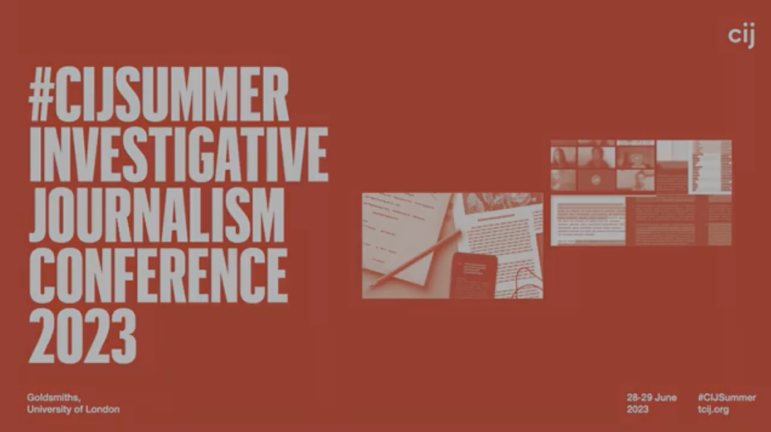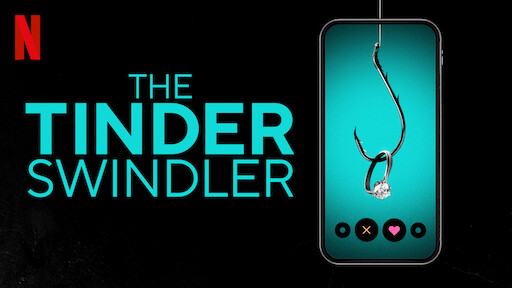

Q & A: Turning Our Tinder Swindler Investigation into a Netflix Hit
Although the reporters behind the Tinder Swindler investigation were nervous, it didn’t take long for them to realize their story was going to be a global phenomenon.
Their article explained, in sometimes excruciating detail, how a man calling himself Simon Leviev had romanced a Norwegian woman, Cecilie Schrøder Fjellhøy, that he met via a dating app, taking her on private jets and to fancy hotels, telling her how much he loved her, before, allegedly, asking for enormous loans and disappearing.
It was a digital tale of what seemed to be a romantic Ponzi scheme, at the heart of which sat a man who used different aliases and traveled across the world – all seemingly on borrowed money.
The 2019 investigation by Verdens Gang (VG), Norway’s largest newspaper, was titled The Tinder Swindler, and quickly went viral. More alleged victims came forward. The man known as Leviev was eventually arrested and sent to Israel where he was wanted for evading the authorities on a fraud charge. And then Netflix got involved.
The Netflix documentary, which was based on the VG investigation and features the reporters and two of the women first identified in the article, spent a month on Netflix’s “most-watched” list when it premiered in February 2022.
GIJN spoke to Natalie Remøe Hansen, an investigative reporter with a background in video, and Kristoffer Kumar, a filmmaker who also worked on the VG exposé, to find out what it was like seeing their story appear on one of the world’s largest streaming platforms, the experience of turning a newspaper investigation into a documentary, and if they got rich in the process.
Remøe Hansen has been a journalist for 10 years and was shortlisted for the European Press Prize in 2016 under the innovation category. Kumar is a documentary filmmaker and photographer, and a staff video journalist at VG. The pair worked on the story together with investigative journalist Erlend Ofte Arntsen, who is now VG’s correspondent in the United States.

The VG investigation featured images, text messages, and video footage documenting the relationships between Leviev and the women he deceived. Image: Screenshot
GIJN: What made the Tinder Swindler a great investigation, and such a good candidate for a Netflix documentary?
Natalie Remøe Hansen: Well, first of all, you have people in the story who are really eager to tell it, and are good at telling it. And by that I’m talking mainly about Cecilie [Fjellhøy] and Pernilla [Sjoholm, the second woman featured in the VG investigation]. We actually met with the director earlier today, and she said that it was really important for her that when you have a whole story carried on one person’s shoulders — which was Cecilie — it’s really important that she’s good at telling it, if it’s going to be a documentary on Netflix. And the second thing is the material: every bit of the story was documented on her phone. There’s so much material there, so you can tell the story as if it were happening “now.” And that’s really important, too, when you’re making a documentary.
GIJN: Is there something about it being a story that relates to so many people? The big investigative stories are often about oligarchs or about corruption, which doesn’t always relate to readers in the same way that a story about a relationship does.
NRH: Absolutely, because everybody can relate to falling in love and to dating and to getting messages on their phone from somebody they are curious about.
Kristoffer Kumar: In Norway, we had read a lot of stories about, for example, women in their 50s or 60s, not very familiar with the internet and what you might call intimate dialogue, being swindled by someone they thought was their boyfriend, but who was really someone else. But this was a story about a young woman, a woman in her 20s with a master’s degree working with computers every day. And it was kind of a digital story of a love scam, which was something that we hadn’t heard much about. So it stood out from the regular dating scheme crime stories that we had read before.
GIJN: Was that universality — and the fact that is a story that could happen to anyone around the world – something that made it a good contender for a documentary that was going to be international and on a platform like Netflix?
NRH: We haven’t talked to Netflix about it ourselves, but I guess that’s really important. And then actually, this film doesn’t have any Americans in it: It’s all “foreign” people in the documentary, which is quite unusual when you have this big hit on Netflix. Also, what’s unusual is the con artist, the “swindler,” isn’t in the film. But still you can tell so much about him because of the material.
KK: Both the themes of intimate dialogue and love are very universally relatable no matter where you’re from. And the characters and locations, for everything that happens, are from all over the world. And I guess that’s a good starting point for a documentary that is shown in various countries.
GIJN: Tell us then about the process: You published your investigation in 2019. It was a big hit and instantly went viral. How did you go from that to making a documentary?
KK: Well, I can just start by saying we were very nervous the Saturday we were publishing, wondering: Will anyone read this? Will our story play digitally? Will it be buggy? But quite early on, we could see the numbers of readers on the newspaper site and could tell that this was a story that people liked to read. And we could also see on Twitter and other social media platforms that people were starting to read it and share it. We published both in Norwegian and in English, because we knew that there were a lot of countries involved. Simon [Leviev] is from Israel. And there had been [his] conviction in Finland. The following week we published stories from London, Amsterdam, New York, and Tel Aviv, all with people who said they had been scammed in very different ways by Simon Leviev. And so we did follow-ups. And the story was mentioned in a lot of different media all over the world.
NRH: After we published, we got a lot of requests from different producers and authors, but we were a bit restrictive. We were saying that it was Cecilie and Pernilla’s choice. They got a manager, and they got in touch with the production company, who picked up our story. And during summer or in the fall of 2019, I was contacted by the production company, and they had already made a deal with Cecilie and Pernilla.
GIJN: So it was led by them?
NRH: Yes.
KK: Then we started to talk to the production company about what the process would be, which dealt with borrowing some of our material to tell the story, like the part where we went to Israel, for example. Borrowing by buying. And how we would appear in the documentary.
GIJN: So how did you navigate that? Was that with your employers, or was it a personal decision, and was it something you talked through in any length with Cecilie and Pernilla?
NRH: We talked a lot to our editors here at VG and met the producer and the director. And once we made a deal, we sent them all of our material that had already been published. That’s important. We didn’t give them anything that wasn’t published because we have a lot of other information from unpublished sources, but all of this we kept to ourselves. They visited us in Norway, meeting us, hanging out with us, and talking for a day. And then after, well, half a year later, they did an interview with us.

Kristoffer Kumar films while Natalie Remøe Hansen interviews a member of Leviev’s legal team. Image: Tore Kristiansen
GIJN: And how did it feel to know that someone was interested in making it into a documentary and knowing that your work would reach such a wide audience?
KK: First of all, it was important for us to tell this story. When Cecilie was speaking to us, her goal was for this story to come out, and to prevent other people from experiencing the same thing as she had experienced by showing his methods. And we were, of course, pleased that our investigation and our story could do this. I guess I’m just happy for her that having this story on Netflix, showing him and his methods, and having that now shown to the world.
NRH: You get kind of nervous because when you have been working on a story for such a long time you feel somewhat, the ownership of it. If you then give it all away you feel kind of nervous. You want to know: “Are these people going to treat the sources well? Is this going to be a product you want to be involved in?” And, it’s for such a big audience that it feels really weird, but we are really pleased with the result. I think they have done a great job. And I feel a bit proud seeing our investigation on the platform.
GIJN: How much say do you have over the final product? Or in handing over your material and becoming kind of another interviewee in the documentary? Did you lose that editorial control or input?
NRH: They had editorial control. We were allowed to point out factual mistakes, if there were any, when seeing it before it was published, but they had editorial control.
KK: We basically have the same rights as someone we interview in our Norwegian newspaper. So that’s kind of funny.
GIJN: So in terms of tips for navigating this process, what do you recommend: Is it a good idea to get an agent and do you have any other tips for reporters in this situation?
NRH: Well, if we knew how big this was going to be, I guess it would have been a good thing to have somebody who had experience with talking to producers. It’s been a lot of work.
KK: Because our story and material was shot to be used by a Norwegian newspaper and not on Netflix, it was shot in different formats, using different cameras. So I guess that’s something I’ll have in the back of my head now when doing something new, that this could be used on other platforms as well.
NRH: If we, as journalists, ever come across a story like this again, I think we will have a bit of a different approach while starting to work on it.
GIJN: Did the fact that you did have all of that original material and that you’d gone undercover mean that you already had quite rich visual products that could be used? And that the documentary makers didn’t need to start from zero in a way that they would with a lot of newspaper investigations?
KK: I guess that’s the big difference with this story from others our newspaper has run, like a lot of big crime investigations. For this story, it was clear very early on that a lot of this story contained the visual material, and Natalie, as a video journalist, was approached quite early on. I guess if someone had said we have this complete story, it’s fully made, we only need you to do the presentation, and it’s going to be published in two weeks, it would have been more difficult to do a visual story like this without having all the elements of video, text, and images.
NRH: I’m really glad we did it in that way because the story itself is unique. But the way we told it, the way it was presented was actually what made it get so much attention from the rest of the world, and therefore a lot of producers saw it and therefore, it’s now in this documentary.
KK: So this story was actually the most-read story ever in our newspaper. And VG is the most-read newspaper in Norway. And I guess the visual presentation — and having the story start with images, videos, and texts from the first date of Simon and Cecilie — was a hook that made people read through the whole story. This story had almost 50% of the readers reading all of the story, which takes about 20 to 25 minutes to read. That’s quite unique for us.
GIJN: And how true was the Netflix documentary to the story that you told? Did they do any additional reporting beyond the interviews?
NRH: They have a new victim Ayleen [Charlotte], who’s never told her story in public before, and which makes the documentary turn in a way — there’s a twist at the end — which makes it a better movie. And then I think also what they did really well, better than we did, was to show that it happened at the same time. For viewers to see he was in Amsterdam at one point, then he had to flee because of his “enemies” to Stockholm. And there, you have [Pernilla] telling her side of the story. So the movie did really well in telling viewers how he was juggling several women at the same time.
KK: It’s beautiful to see how a documentary movie like this can use all the turning points in the story in a more effective, or more rapid way, than we do in the news article.
GIJN: Did you follow-up your investigation?
NRH: After we published, we did follow-ups for about two months. And then of course we did a lot of follow-ups when he was arrested in the summer of 2019, and then we went back to Israel to cover the trial in Tel Aviv. We have been following it from a distance after that.
GIJN: How important was it to be able to be on screen and to talk about the investigation itself and the techniques you use, like tracking, tracing financial records, chasing a subject, and confronting him? Did you want to show how you’d got there?
KK: I guess I was trusting the production company to tell the story in the best possible way, that I would understand if we were not included. But from a storytelling perspective, I do understand that our video material and parts of our investigation are exciting for people to see. It was not like a demand. It was more like: “Oh, so it’s great that you can use us to tell the story.”
NRH: We are kind of doing the job people would expect the police to do and since you don’t have another hero in the story, except the women themselves, who are also victims, it’s kind of an important role. But we were just happy to be asked.
GIJN: Lots of investigative journalists will be wondering, does it make you rich overnight to have your investigation featured on a platform like Netflix?
NRH: If it’s made us rich? Oh, no. Definitive no.
KK: People also wonder what our investigation cost since we were many people [on the team] and we traveled a lot, and the answers to both questions are: we are staff journalists hired by a media house, so in a way, we don’t really see any of this.
GIJN: Has it helped you as investigative journalists, in terms of what you’re doing next and the power of what you can work on?
NRH: In one way, I think, yes. Because we are being contacted by a lot of people, people feel like they trust VG after seeing the movie. And they believe that we did a good job. But while we were working on the story, we had a job where we both were able to spend a lot of time on the project. We are not working every day on breaking news, so we have time to do investigative and long-term projects.
GIJN: And what are you working on at the moment
NRH: I’ve been working on podcasts. But it’s still a secret. We’re actually traveling together next week.
GIJN: Is it similar to The Tinder Swindler?
NRH: No, I think that story is quite unique.
GIJN: Do you see a growing interest in making films and documentaries about investigative journalists and the stories that they’re uncovering?
KK: This has been a trend… having agencies and production companies specializing in turning investigative journalism to feature films. So it’s definitely a time when audiences are eager to see good stories, both in fiction and documentary, which come from investigative journalism.
GIJN: And for investigative journalism, in terms of the power of that, especially in a digital age, what does that mean?
KK: Good question. In terms of who you can reach in the digital age, you can reach everyone with investigative journalism, I guess. The world is a lot smaller.
Editor’s note: After the Netflix documentary was released, an Instagram account that used the handle @simon_leviev_official suggested he would share his “side of the story… when I have sorted out the best and most respectful way to tell it, both to the involved parties and myself.” The Leviev family is reported to be suing the man who named himself Simon Leviev for falsely claiming to be a member of the diamond magnate family. In the meantime, he has been banned from the dating app Tinder.
Additional Resources
Of, By, and For the Smartphone: The Tinder Swindler Investigation
Tips for Interviewing Victims of Tragedy, Witnesses, and Survivors
What to Watch: Oscar-Nominated Feature Documentaries
 Laura Dixon is GIJN’s associate editor and a freelance journalist from the UK. She has reported from Colombia, the US, and Mexico, and her work has been published by The Times, The Washington Post, and The Atlantic. She has received reporting fellowships from the International Women’s Media Foundation and the Pulitzer Center for Crisis Reporting.
Laura Dixon is GIJN’s associate editor and a freelance journalist from the UK. She has reported from Colombia, the US, and Mexico, and her work has been published by The Times, The Washington Post, and The Atlantic. She has received reporting fellowships from the International Women’s Media Foundation and the Pulitzer Center for Crisis Reporting.





